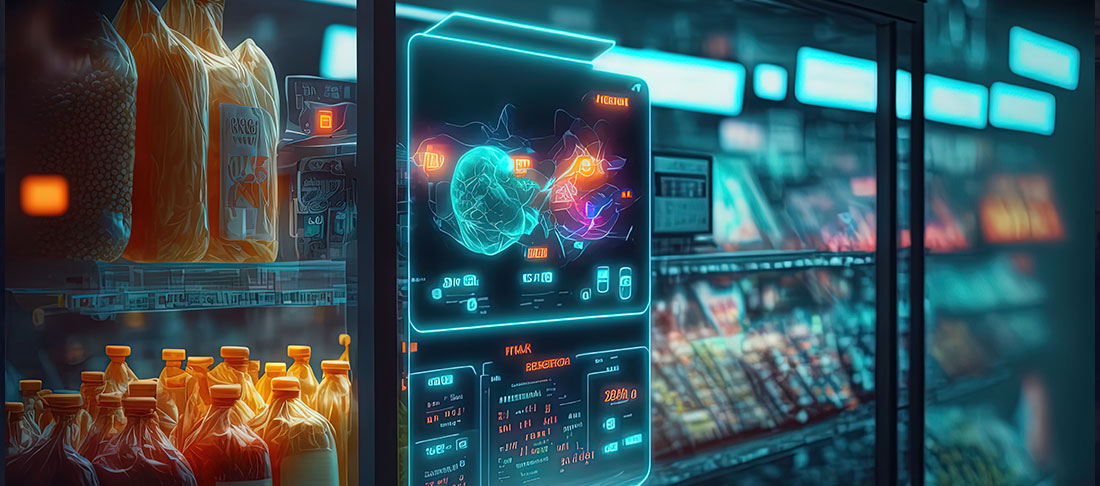As the promise of the AI revolution increasingly meets the real world, business use cases from improving forecasting to streamlining customer interactions have been touted across almost every industry and function. When it comes to adoption, however, there remains a sense that commercial business leaders are approaching these tools with caution. The more complex the use case, the less likely it is that commercial leaders will want to be on the bleeding edge of a technology that has the potential to disrupt existing commercial processes.

To this end, the CPG sector represents a perfect test case for attitudes and adoption of AI in the commercial function – Sales, S&OP, and Forecasting. With intricate supply chains, ever-shifting consumer demand, and vast quantities of available customers, product, and market data, the potential for AI to revolutionize a given company’s operations is equaled only by its potential to disrupt them. There seems to be traction on the marketing and supply chain side, but its front-end customer management function (commercial) has not been able to scale AI according to the firm’s extensive research.
Through September 2023 Carpe Diem Partners spoke with 105 executives leading commercial functions across a range of multinational, private, public, and midcap CPG firms––to gauge their current view of AI adoption within their own company’s commercial function.
Below, we synthesized key takeaways, shedding light on the current status, applications, sentiments, and challenges surrounding AI in the commercial function with the consumer products industry.

AI Adoption Status
Underlining the risks involved within large CPG businesses, almost 60% of the leaders surveyed noted that their companies are not currently leveraging AI within the commercial function. Just 31% have some form of AI involvement or exploration, with varying levels of involvement. What is being done is more exploratory skunk works rather than business imperatives with clear value creation.
Common Use Cases:
- Forecasting: Many companies seem to be either using or considering using AI for forecasting–not least because of the number of vendors offering services in this area.
- As one leader who is exploring AI-enhanced forecasting noted, “We are getting pitched by every AI data company out there.”
- E-commerce and Marketing: As the best fit for generative AI tools at present, it’s little surprise that several leaders noted they were finding use cases related to producing copy and providing chat-based sales and support tools.
- One leader noted that their team “installed a virtual sales assistant and a chatbot. They also re-platformed the content management system.”
- Another use case is around web visibility, with another executive sharing that their team is in “early days of usage – [we are] doing some SEO with [company redacted] developing AI tools for search bidding.”
- Innovation and Planning: Some companies are exploring AI’s potential in these areas, with one leader noting their company is “only using it for the innovation pipeline – doing proof of concept activities.”

Sentiments, Challenges & Barriers
As expected, sentiment across CPG commercially oriented executives ran from skepticism to positive assessments of the future potential of AI within the sector and function–but with skeptical or cautious responses outnumbering those who are more optimistic at this point.
Caution is the Prevailing Approach
[Our team] are dipping around with it with some caution,” noted one commercial executive, with another noting that the tools are “new to everyone–we’re trying to see where it can be used but sensing its impact on people. There’s a big push but low adoption rates.”
Part of that caution is driven by AI companies themselves, with several leaders expressing skepticism around “some of the claims the companies are making” — an entirely reasonable outlook in a sector where clear results are yet to materialize.
Internal silos may also be contributing to this cautious outlook, as demonstrated by one executive who noted that, while AI is “more built out in ecommerce dept, it is still in its infancy [elsewhere]. Marketing is reticent to give up control for national campaigns.”
Follow-the-leader
As one leader noted, following the leader creates an environment where it may be safer and more efficient to simply “wait for a broader group to pilot it and work out the kinks.”
Another was similarly forthright, noting that “our CEO likes to see new tech proven by competitors before they dive in with it.”
Future benefits
Even among those who have begun exploring commercial use cases for AI, the overall sentiment is applications using true AI are some way off in the future.
We have started to integrate it into the commercial function, but not in a way for it to influence revenues,” (or create value) noted one leader. “That impact will come in 2025.”
Conclusion
It is evident that, while the majority of CPG commercial leaders surveyed undoubtedly recognize AI’s transformative potential, the scale and complexity of their commercial operations provide good reason to approach these tools with caution.
As a result, it seems likely that much of the AI-related commercial innovation in the CPG sector is likely to appear as the result of “skunkwork”-style projects or within agile, smaller entities. These pioneers will bear the onus of validating AI use cases, potentially setting the stage for later adoption by larger-scale players.


These market insights from Carpe Diem Global Partners are gathered from the firm’s extensive client work leading Board, CEO, CXO, and CHRO executive search engagements for public and private multinational companies. For deeper, custom insights, contact Jeff DeFazio at Jdefazio@carpediempartners.com.

